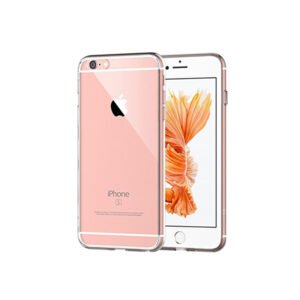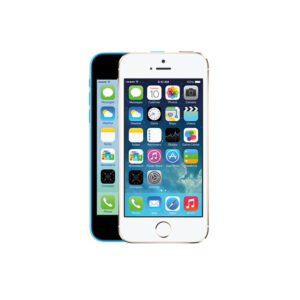Mobile applications have turn into a vital part of everyday life. Because the app ecosystem continues to develop, app publishers are more and more looking for ways to generate revenue. One of the popular methods of app monetization is through mobile advertising. With the rise of programmatic advertising and the increasing sophistication of ad platforms, mobile ads have turn out to be a profitable revenue stream. Nonetheless, to effectively monetize an app through advertising without disrupting the consumer experience, app publishers should follow greatest practices to ensure long-term success.
The Evolution of Mobile Advertising
Mobile advertising has advanced from easy banner ads to more sophisticated formats equivalent to native ads, rewarded videos, and interstitials. Within the early days, many ads have been intrusive and disrupted the user expertise, leading to a backlash from users and builders alike. As mobile technology advanced, so did the ability to serve targeted and less intrusive ads.
At the moment, mobile ads could be highly personalized based on user habits, location, and preferences, making them more effective for advertisers and less annoying for users. Programmatic advertising, which automates the buying and placement of ads, has also revolutionized mobile ad monetization. This has made it simpler for app publishers to generate income while delivering relevant ads to their users.
Deciding on the Right Ad Formats
Choosing the right ad format is essential for maximizing income and sustaining user interactment. The most popular ad formats for mobile apps include:
Banner Ads: These are small ads that appear at the top or backside of the app screen. Banner ads are simple to implement and usually are not overly intrusive. Nevertheless, they tend to have lower engagement rates, and customers could quickly develop “banner blindness.”
Interstitial Ads: These are full-screen ads that appear at natural transition points within an app, similar to between levels in a game. Interstitial ads typically have higher interactment and click-through rates, but they are often disruptive if not timed well.
Native Ads: Native ads blend in with the app’s content and design, making them less intrusive. These ads could be very efficient, as they feel like part of the app experience. Nevertheless, they require more effort to implement than customary ad formats.
Rewarded Video Ads: These ads offer customers a reward, such as in-game currency or premium options, in exchange for watching a video. Rewarded ads are popular in gaming apps, as users willingly have interaction with the ad to realize a benefit. This ad format has some of the highest engagement rates and provides value to each users and advertisers.
Playable Ads: Playable ads are interactive ads that allow users to check out a mini-version of a game or app. They’re highly engaging and provide customers with a taste of the advertised app earlier than they download it.
Prioritize Person Expertise
While mobile advertising may be a wonderful source of income, it’s essential to prioritize the person experience. Overloading an app with ads can frustrate customers and lead to high churn rates. To keep away from this, app publishers should focus on serving ads on the right time and place.
For instance, interstitial ads ought to be shown during natural breaks in the app’s flow, resembling between levels or after a user completes an action. Native ads should seamlessly blend in with the app’s design, so they don’t really feel out of place. Rewarded ads needs to be optional, giving users the selection to have interaction with the ad for a reward or continue without watching.
The key is to strike a balance between monetization and user experience. Happy users are more likely to stay engaged with your app, providing long-term income opportunities.
Leverage Data and Personalization
One of the significant advantages of mobile advertising is the ability to leverage data to deliver personalized ads. By analyzing user behavior, location, and preferences, app publishers can serve highly focused ads which can be relevant to individual users. This will increase the likelihood of interactment and reduces the possibilities of customers feeling annoyed by irrelevant ads.
For example, if a consumer ceaselessly engages with fashion-associated content, showing them ads for clothing brands is more likely to result in a click than showing them ads for unrelated products. Personalization additionally helps build a positive relationship between the app and its users, as they really feel that the ads they’re seeing are relevant to their interests.
Optimize Ad Placement and Frequency
The placement and frequency of ads within your app can significantly impact each person expertise and revenue. Ads must be placed in locations the place they are likely to be seen, but not intrude with the app’s core functionality. For example, banner ads are sometimes positioned at the backside of the screen to keep away from obstructing essential content.
Frequency capping is another essential factor. Showing the same ad too often can lead to ad fatigue, inflicting customers to ignore and even uninstall the app. Implementing frequency caps ensures that customers usually are not bombarded with the identical ads repeatedly, improving the overall ad experience.
Partner with the Right Ad Networks
Selecting the best ad network is critical to the success of your mobile advertising strategy. Not all ad networks are created equal, and some could supply higher targeting capabilities, higher payouts, or more reliable fill rates. It’s essential to test a number of ad networks to find the perfect fit to your app’s audience and revenue goals.
Additionally, consider partnering with mediation platforms that assist you to connect with multiple ad networks simultaneously. This can enhance fill rates and optimize your revenue by automatically deciding on the highest-paying ads.
Conclusion
Monetizing an app through mobile advertising is a proven strategy for generating revenue, but it requires careful planning and execution. By selecting the proper ad formats, prioritizing person expertise, leveraging data, and partnering with the fitting ad networks, app publishers can create a sustainable and profitable ad monetization strategy. Balancing monetization with consumer satisfaction is the key to long-term success within the competitive world of mobile apps.
If you adored this post and you would such as to receive more facts relating to advertise site kindly check out the page.

















